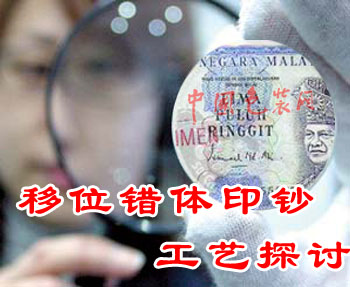
What this article wants to talk about is not the analysis of various kinds of printing techniques, but the three major printing steps, such as shading, main pattern, and capping, which are applied to the printing of banknotes.
3 major printing steps
(1) Printing of shading.
On the banknotes you can see a lot of lined patterns. Apart from being beautiful as a master image for the banknote surface, these patterns also have an anti-counterfeiting function. Because these patterns are now all engraved with an electric engraving machine, their shape can be freely bent or deformed. If someone wants to imitate it, it is difficult to achieve its purpose. Usually shading is lithographic offset printing. In order not to destroy or flatten the raised graphics of the main pattern printed by the intaglio, the vast majority of the banknotes are printed with shading before the main image is printed in gravure. The line drawing of the shading is printed by the lithographic plate, and the lines have a smooth feeling when touched with a finger. Figure 1 shows the 1986 version of the RM100 change in the background of the misplaced banknotes. The overall shading of the banknotes shifts to the left, resulting in the appearance of a long, wide blank on the right side.
(2) Intaglio printing
After the shading is printed, the subject pattern of the banknote surface, such as figures, animals, flowers and birds, architecture, etc., is printed on the gravure plate, which is the most important part of the banknotes. The pattern is printed by engraving gravure printing. Therefore, the lines are fine and the levels are clear. If you touch with your fingers, you have a raised feeling. This type of bumpy printed text is the most effective function for authenticating the banknotes on the banknotes. The general printing or copying methods on the banknotes cannot be copied. Figure 2 is the current 100 RM banknotes. The front side shading is printed. The position is correct, but the whole figure is shifted to the left, resulting in the text of “BANK NEGARA MALAYSIA†being divided on the left and right sides of the banknote surface. Figure 3 shows the 1986 version of a 100 RM banknote. The entire main pattern on the front side is shifted downwards so that the pattern on the lower side of the banknote is shifted to the top to make a misplaced body.
(3) Stamping.
After both the shading and the main image of the banknote are printed, the next step is to pay the identity of the banknote, that is, the ID, just as each of us has a name that distinguishes others. The ID of the so-called banknote can be Say it is its number (serial number) or signature, stamp, etc., with ID banknotes, can produce the effectiveness of banknote circulation. Usually the printing of such an ID portion is stamped and is the final action of the banknote printing. Since each banknote must have its own number, the printing of numbers is the most meticulous task in printing money. Imagine how to count the number of banknotes if they are reversed or mistakenly printed. The printing of the vast majority of banknote numbers is printed in letterpress using a special-purpose wheel printer. Figure 4 is a RM 50 RM banknote in 1986. The red number should be on the left, but the banknote is shifted to the right. Figure 5 shows the RM 50 RM bill in 1976. Its number is shifted to the left and right, and the number is offset by the offset.
Different from the cutting offset error
The above-mentioned displacement error bodies are all the print displacements caused by the failure of the paper. The displacement error body is only one-sided, and the other side is the normal position. This is different from the cutting displacement error body. (Text: Jiang Shanglong)
Brass Manifolds,Copper Pipe Fittings ,Plumbing Pipe Fittings ,Pipes And Fittings
Combination & Joint Fittings Co., Ltd. , http://www.nbpipefitting.com